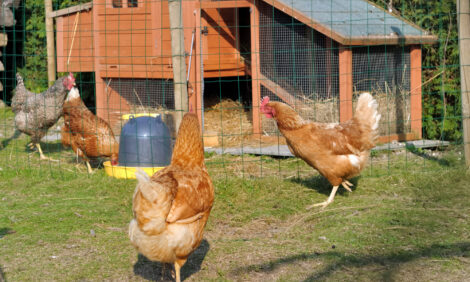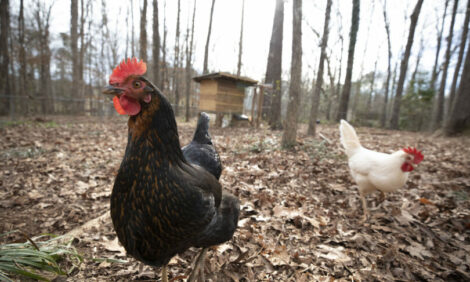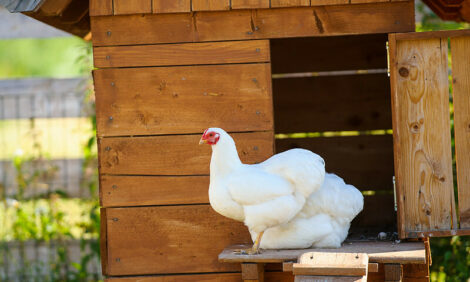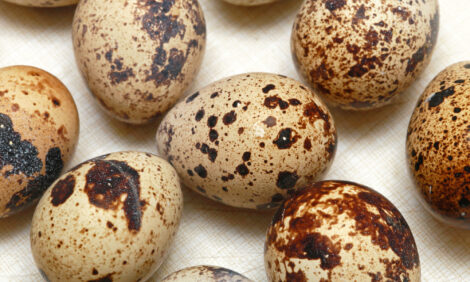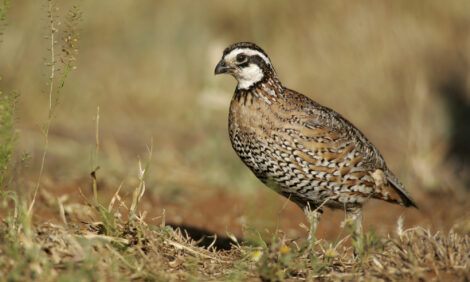



US Poultry Industry Manual - Mallard duck production
Learn more about raising Mallard ducksPart of Series:
< Previous Article in Series Next Article in Series >
Editor's Note: The following content is an excerpt from Poultry Industry Manual: The Foreign Animal Disease Preparedness and Response Plan (FAD PReP)/National Animal Health Emergency Management System (NAHEMS) Guidelines which is designed to provide a framework for dealing with an animal health emergency in the United States. Additional content from the manual will be provided as an article series.
Mallard ducklings are raised commercially and sold to hunting preserves, primarily along the East Coast of the United States.
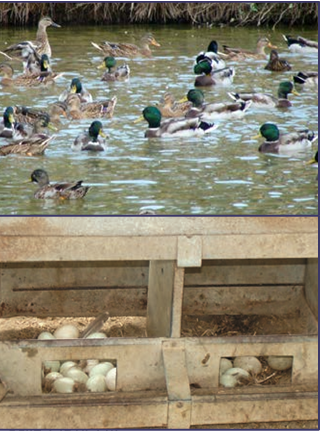
Managing Mallard breeders
Next year’s breeding stock are selected from the current year’s commercial flocks based on phenotypic characteristics such as feather color and quality, leg strength and conformation, body size, and overall health. Most mallards are colony mated with one drake to 4-7 hens. Each hen will produce (on average) 34 sellable ducklings in one year. Hens lay their eggs in outside nest boxes which are commonly lined with straw.
Still, the incidence of eggs laid on the ground is often high. Dirty eggs can be a problem, especially in rainy weather. The egg production cycle is generally from the first of April until mid-July. Eggs are usually gathered once a day, washed in a warm sanitizer at 110°F for a short period, and held for one week before being set. At the end of the lay cycle, breeders are allowed to molt and then are sold.
Hatching Mallard eggs
The incubation period for a Mallard duck egg is 28 days. Incubation machines are set at 99.5°F with an 85°F wet bulb temperature.
Brooding ducklings
After hatch, one-day-old ducklings have their right dew claw removed which differentiates them from their wild counterparts. Ducklings are placed into a heated brooder, often on vinyl-coated wire, and kept in a smaller pen for one week.

Ducklings are moved to a larger pen at two weeks of age where trough waterers provide access to a plentiful supply of water. At 3 weeks of age, ducklings are given access to the outdoors and multiple ponds which may or may not have overhead netting. Ducklings do not leave ponds because of their tendency to stay with hatch mates as well as the ready availability of feed. Feed must be supplied constantly to avoid problems with feather picking and aggression. Groups are segregated by age, such as five week olds or 8 week olds, until shipped to a hunting preserve.
Management steps to control disease in this type of husbandry system are important. First, because of high bird density on the ponds, water has a high organic and nitrogen load. To prevent botulism, fresh water and aeration are frequently added into the ponds.
Second, because the feeders are kept outdoors, any feed that becomes wet or spills on the ground must be removed frequently. Wet feed can become moldy and maggot-blown, encouraging botulism and mycotoxin development. Ducks are highly susceptible to both toxicities and high death losses are possible if these toxins become established.
Third, because mallard ducks are raised outdoors, often in uncovered ponds, predator losses can be quite high.
Hawks, owls, weasels, raccoons, foxes, coyotes, and snapping turtles take large numbers of ducklings annually.

Mallard duck hunting preserves
Commercial mallard duck hunting is allowed on state-permitted private lands. States offering these permits include Pennsylvania, Delaware, North Carolina, South Carolina, Maryland, Georgia, and Alabama. Hunting season is typically October-May 1st. It is estimated that up to 4 million mallards have been released since 1983.
Ducks are usually purchased between 6-8 weeks of age and placed on ponds or flooded crop land, but they also can be purchased as adults for release. These ducks are provided protein pellets and grains, such as milo, corn, and millet, until hunting season commences. During hunting season, supplemental feed is withdrawn and ducks must eat grains planted in fields. Deliberate baiting of hunted birds is not allowed; this minimizes co-mingling with wild waterfowl. Ducks are provided some cover and multiple ponds as resting places. Preserves are hunted once or twice per week to reduce stress and hunting pressure on the population.

Nutrition
Nutrient requirements of game birds have not been as thoroughly studied as requirements for commercial poultry such as layers, broilers, and turkeys. Game birds nutritional requirements are often extrapolated from poultry rations. As in poultry rations, dietary formulations are different according to the age of the birds. Starter feeds, grower feeds, maintenance feeds, and breeder rations are fed. Their feeds most closely resemble turkey rations and it is assumed that game birds have higher requirements for protein and amino acids. Also, game bird feeds contain more vitamins and minerals than chicken diets. As in poultry, feed is the single highest cost to produce game birds. The end goal is to develop healthy, well-feathered, muscled, active, and athletic birds that will challenge sportsmen in the field.
There are most likely different requirements for each species of bird being raised. Ducks, pheasants, quail, and partridges probably differ in dietary needs but these differences have not been well-studied. Requirements for Ring-necked pheasants and Bobwhite Quail are given below (Table 1), but researched dietary recommendations for partridges or mallard ducks are not available.
Nutritional deficiencies are sometimes suspected in these species. Often, problems with unexplained weight gain, poor feathering, uneven growth, reduced egg production, and fertility are seen in field situations. However, it is important to note that although a balanced formulation may be originally obtained, game bird rations are more prone to degradation due to several factors:
- Most game bird operations are not large enough to quickly use up purchased feeds. Large volumes may be purchased for economical reasons, but smaller producers may need to store this feed for several months before obtaining new feed. Feed may suffer a decline in quality, especially if stored over hot summer months.
- Breeder formulations are kept constant throughout the breeding cycle. While there are advantages to fixed formulations (as opposed to least-cost rations used in poultry production), if consumption declines due to heat, intake of important nutrients will also be reduced. In such instances, feeding a more nutrient-dense diet may improve egg production, shell quality, and hatchability.
- Once game birds are moved outside to flight pens, feed is obtained in outside feeders that are exposed to harsh elements, such as heat or moisture. This can lead to nutrient decline and mycotoxin development.
Table 1. Nutrient Requirements of Ring-Necked Pheasants and Bobwhite Quail as unit per kilogram of Diet (90% dry matter)* |
||||||||
Ring-Necked Pheasants |
Bob-White Quail |
|||||||
Nutrients |
Unit/kg Diet |
0-4 Weeks |
4-8 Weeks |
9-17 Weeks |
Breeding |
0-6 Weeks |
7-12 Weeks |
Breeding |
Protein |
% |
28 |
24 |
18 |
15 |
26 |
20 |
24 |
ME Energy |
Kcal |
2800 |
2800 |
2700 |
2800 |
2800 |
2800 |
2800 |
Calcium |
% |
1.00 |
0.85 |
0.53 |
2.50 |
0.65 |
0.65 |
2.40 |
Chlorine |
% |
0.11 |
0.11 |
0.11 |
0.11 |
0.11 |
0.11 |
0.11 |
Sodium |
% |
0.15 |
0.15 |
0.15 |
0.15 |
0.15 |
0.15 |
0.15 |
Nonphytate Phosphorus |
% |
0.55 |
0.50 |
0.45 |
0.40 |
0.45 |
0.30 |
0.70 |
*Nutrient Requirements of Poultry, Ninth Revised Edition, 1994. National Academy Press, Washington, D.C. |
||||||||
Reference: "USDA APHIS | FAD Prep Industry Manuals". Aphis.Usda.Gov. 2013. https://www.aphis.usda.gov/aph...
The manual was produced by the Center for Food Security and Public Health, Iowa State University of Science and Technology, College of Veterinary Medicine, in collaboration with the USDA Animal and Plant Health Inspection Service through a cooperative agreement.










